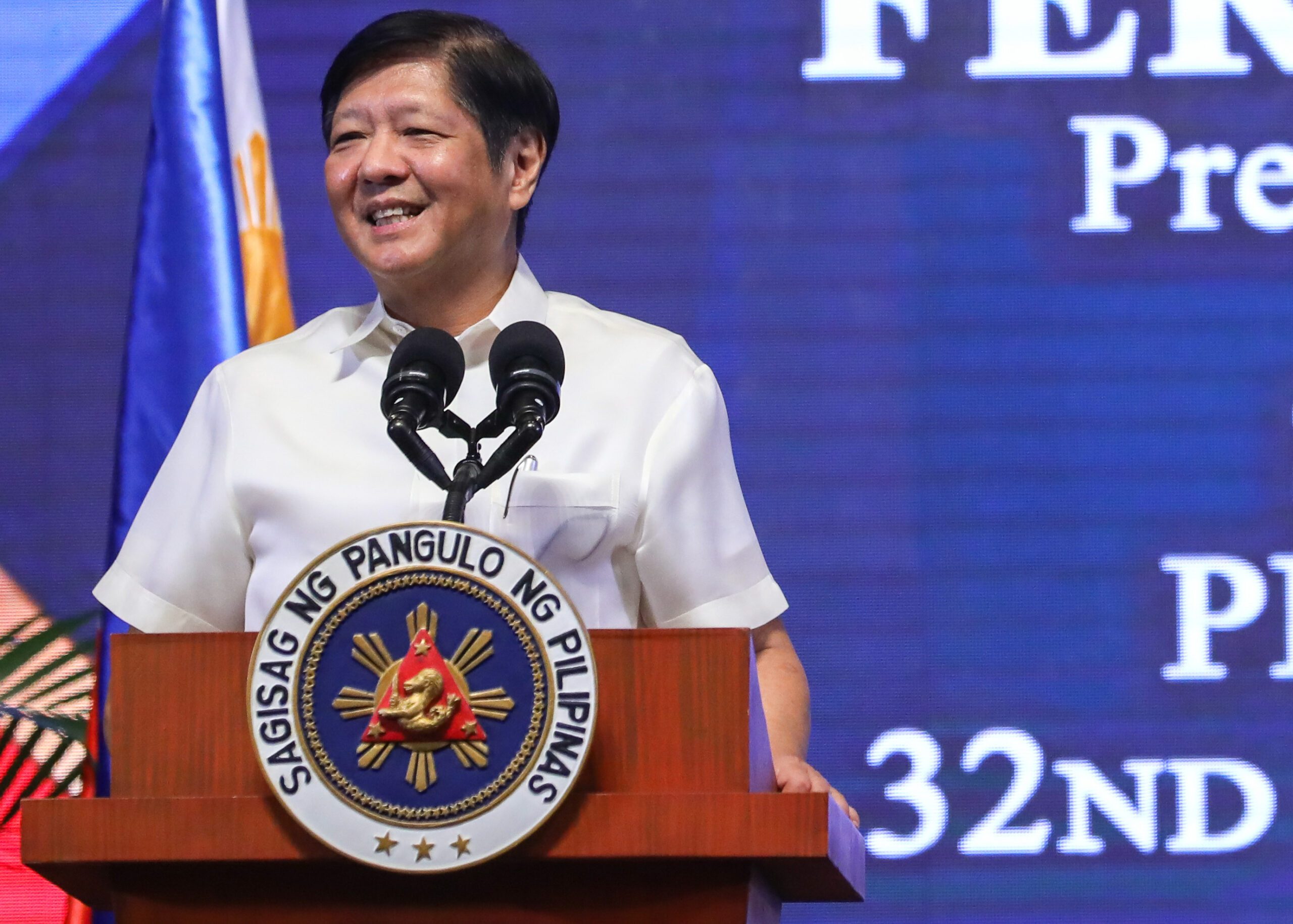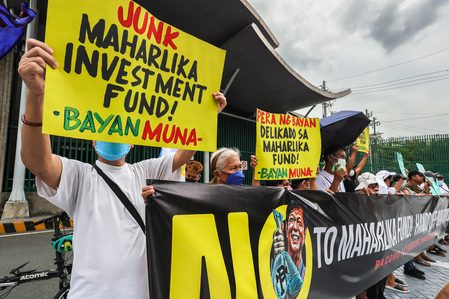SUMMARY
This is AI generated summarization, which may have errors. For context, always refer to the full article.

MANILA, Philippines – The controversial Maharlika Investment Fund is just a signature away from becoming law, and some economists and academics are making last-minute efforts to urge President Ferdinand Marcos Jr. and his team to revisit the proposal.
Faculty members of the University of the Philippines School of Economics (UPSE) issued a strongly-worded discussion paper on Tuesday, June 6, a week after both chambers of Congress swiftly acted on the measure, saying that the Maharlika fund “violates fundamental principles of economics and finance and poses serious risks to the economy and the public sector – notwithstanding its proponents’ good intentions.”
UPSE faculty underscored some crucial points for Marcos to consider:
Maharlika’s purpose remains unclear even after deliberations of both houses of Congress
Sovereign wealth funds are funded either through surplus revenues drawn from natural resources such as oil or through government’s current account surpluses, fiscal surpluses, foreign exchange reserves, and privatization proceeds.
Without resource windfalls or government surpluses, fund sources can come from the national budget with the primary objective of attaining developmental goals infrastructure investments.
Whatever the funding source may be, any sovereign wealth fund must be clear: is it for stabilizing government finances, accumulating wealth, or funding projects?
Maharlika’s goals, however, lack a clear focus, as it seeks to earn both from commercial returns and investment of huge portions of its funds in local development projects.
While there is nothing inherently wrong with pursuing multiple goals, it must articulate its objectives and expectations.
UPSE faculty emphasized that any sovereign wealth fund must have clear goals on its allowable investments and activities and lay down reasonable expectations and metrics of success.
Maharlika may encroach upon the budget process
Maharlika aims to invest in projects for economic gains. But isn’t this the goal of the government and the budget process anyway?
The discussion paper also warns that Maharlika may bypass the normal budget process, diminish Congress’ power of the purse, and even violate the Constitution.
Maharlika poses huge risks to strained public coffers
In 2022, the Philippines’ current account deficit reached its highest level in nearly two decades, implying that the country is a net borrower from the rest of the world. Meanwhile, the budget deficit had exceeded P1.6 trillion in 2022.
With an authorized capital of P500 billion, the Maharlika fund risks worsening the public debt.
Draining capital from state banks like Land Bank of the Philippines (Landbank) and Development Bank of the Philippines (DBP) risks destabilizing these institutions and compromises their ability to meet capitalization requirements.
Maharlika poses moral hazard risks
The UPSE discussion paper, crafted by 20 faculty members, also warns of moral hazard risks.
In economics, a moral hazard situation is where one party is willing to take on more risk because it believes another party will bear the burden of those risks.
In the context of Maharlika, fund managers may undertake riskier investments because they know that the state stands behind them. The Maharlika board may also be incentivized to take on riskier investments in pursuit of higher returns.
“This means that the public, through their taxes or pensions, could end up bearing the risk of poor investment decisions, while the rewards (if the risky investments succeed) may accrue to a limited group of people, such as those in power and their associates or managers of the fund.”
Safeguards are also unclear. As it is, the bill does not distinguish between poor fund management and general market downturns.
The bill also has no provisions regarding bankruptcy, which could imply that in the end, the Philippine government will shoulder any liabilities or losses.
Maharlika’s goals are vague and may contradict other economic blueprints
Experts noted that Maharlika’s goals speak of “development only in the broadest possible terms” and does not make any reference to the Philippine Development Plan.
“Without anchoring the Maharlika Investment Fund on specific long-term development objectives, [it] may pose macroeconomic risks to become prone to exhaustion when the political environment is unstable or incumbent officials prioritize short-term goals,” the discussion paper read.
Its goals have already been taken up by other government agencies and government-owned corporations like the National Development Corporation, Landbank, and the DBP, which will fund Maharlika, are already involved in development projects.
It may also overstep the functions of the National Economic Development Authority, which scrutinizes and approves infrastructure projects.
Experts also questioned Maharlika’s expected returns. The bill aims to “obtain the optimal absolute return” without elaborating on the level of returns and financial gains.
Red flags in the governance structure
The Maharlika Investment Fund has a poorly designed governance structure that could open floodgates for political interference and corruption.
All board members, as well as its advisory body, are presidential appointees, even the independent directors.
“These provisions will effectively allow presidential appointees to exert significant influence on the everyday operations of the Maharlika, potentially paving the way for politicization and boding ill for the [Maharlika Investment Corporation’s] operational independence – a key determinant of the success of any sovereign wealth fund,” the discussion paper said.
Maharlika is unlikely to grow substantially to finance development projects
Any new sovereign investment fund should be able to “crowd-in” private investments. But with the current global economic environment, this may be difficult to achieve.
A downgrade of the global growth projection, geopolitical conflict, and rising interest rate hikes, are some of the headwinds Maharlika will face.
Norway’s sovereign wealth fund has lost $164.4 billion due to these reasons. Indonesia’s wealth fund, which is Maharlika’s “inspiration,” was injected with $5 billion in 2021. But as of 2022, no foreign investors had come in to reinforce its seed money.
Despite the concerns raised, the discussion paper did not ask Marcos to scrap the proposal. It, however, urged economic managers to “reconsider their position” and advise Marcos “accordingly.”
“We are not unmindful of the political stakes and reputational face-saving that have led to the hasty passage of this law. Short of asking Congress to rescind the bill or the President not signing it – both unlikely scenarios – some hope still exists for reducing the harm and risks this law might bring to the economy,” – Rappler.com
1 comment
How does this make you feel?

![[ANALYSIS] Beware the Maharliscam](https://www.rappler.com/tachyon/2023/06/maharlika-fund-TL-june-2-2023-2.jpg?fit=449%2C449)
![[PASTILAN] A Ponzi scheme called Maharlika](https://www.rappler.com/tachyon/2023/03/tl-maharlika-ponzi-scheme.jpg?fit=449%2C449)



![[Just Saying] SONA 2024: Some disturbing points](https://www.rappler.com/tachyon/2024/07/TL-marcos-sona-points-july-23-2024.jpg?resize=257%2C257&crop=335px%2C0px%2C720px%2C720px)

![[EDITORIAL] Apat na taon na lang Ginoong Marcos, ‘di na puwede ang papetiks-petiks](https://www.rappler.com/tachyon/2024/07/animated-bongbong-marcos-2024-sona-day-carousel.jpg?resize=257%2C257&crop=280px%2C0px%2C720px%2C720px)
![[In This Economy] Delulunomics: Kailan magiging upper-middle income country ang Pilipinas?](https://www.rappler.com/tachyon/2024/07/in-this-economy-upper-middle-income-country.jpg?resize=257%2C257&crop=421px%2C0px%2C1080px%2C1080px)

![[EDITORIAL] Marcos Year 2: Hilong-talilong](https://www.rappler.com/tachyon/2024/07/animated-bongbong-marcos-2nd-sona-carousel.jpg?resize=257%2C257&crop=136px%2C0px%2C720px%2C720px)
![[Newspoint] A fighting presence](https://www.rappler.com/tachyon/2024/07/thought-leaders-a-fighting-presence.jpg?resize=257%2C257&crop=441px%2C0px%2C1080px%2C1080px)





From its conception to birth and perhaps, sadly, to its death, the Maharlika Investment Fund is expected to continue violating the “fundamental principles of economics and finance.” PBBM is not expected to sacrifice his Political Goals for such principles. The Filipino People should be prepared for the “harm and risks this law might bring to the economy.” It is because they will be the one who will ultimately and greatly suffer in the end.